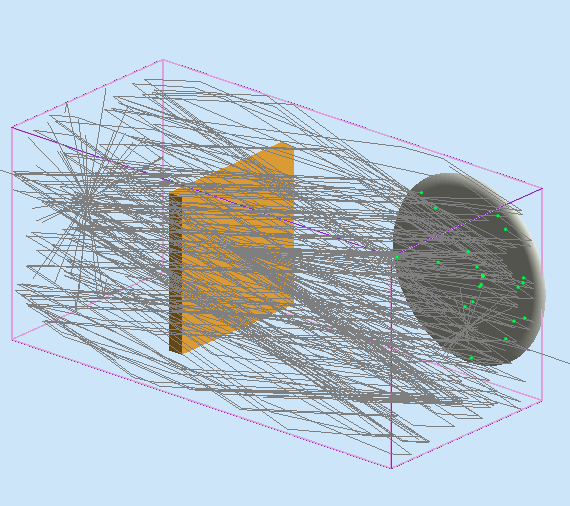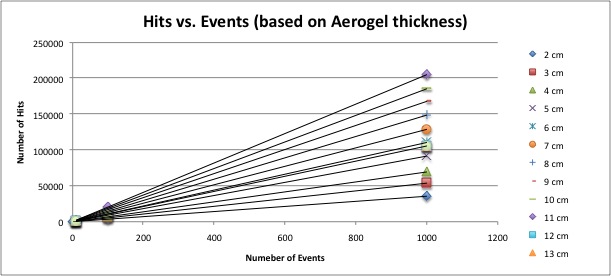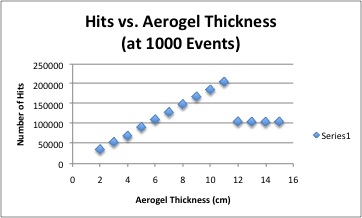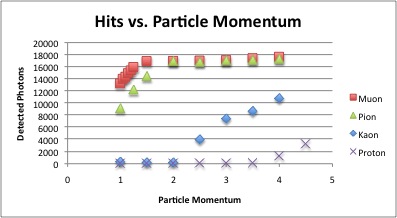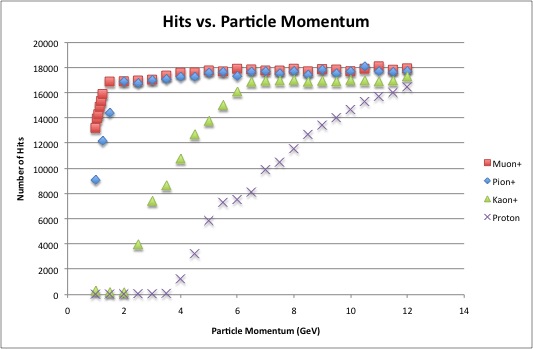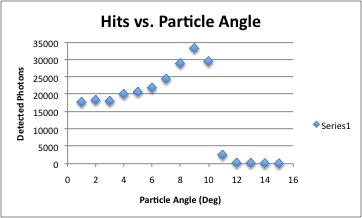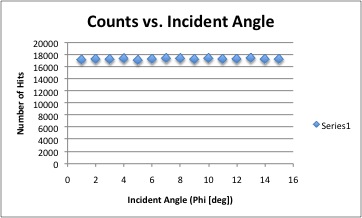MainPage:Nuclear:Summer2012:PrototypeSimulation
| ⇐ Back to Summer 2012 page |
| ⇐ Back to the Main_Page |
This is the page for the simulations Laura is doing in GEMC.
A few notes about the simulation:
- The PMT window is 100% efficient, so all photons that hit the surface are detected as hits.
- The aerogel has a refractive index of 1.03
- The "MillipMylar" (a material written by Marco to simulate the Mylar lining in the prototype) lining of the box is not diffusely reflective
- User inputs such as particle type, momentum and position, as well as the number of particle events can be changed in the executable file (exe.s); geometry parameters are changed in the perl script (build_summer.pl). Unless otherwise specified, the aerogel panel is 1cm thick and the incident particle has a momentum of 3GeV.
Number of Tiles
A number of runs were preformed to study the effect of the number of aerogel tiles (or thickness of a single aerogel tile) has on the efficiency of the detector (ie. how many photons are detected). It can be seen from the plot below (Figure 1) that the relationship is incredibly linear, as would be expected.
Below is a plot of the number of photons detected vs. the thickness of the aerogel (for 1000 events). When the aerogel surpasses a thickness of 11 cm, a good number of the photons emitted are trapped and absorbed within the aerogel instead of escaping to be reflected within the light-box and ultimately detected by the PMT window.
Particle Momentum vs. Number of Detected Photons
Similar to simulations run summer 2011 using the Fortran Monte Carlo program SimCherenkov, I used this GEMC simulation to study the momentum threshold of the incident particle for aerogel of index 1.03. The results seem to be consistent with the behavior seen from the SimCherenkov simulation.
Below is a plot of the number of detected photons vs. the momentum of the incident particle for Kaons, Pion, Muons and Protons at low GeV (top) and over a range of momentum from 1 to 12 GeV (bottom).
Position of Incident Particle
Simulations are underway to study the effect of the position of the incident particle on the total number of photons detected. Preliminary results (below, left) show that there is a threshold for the angle "Theta" at which the efficiency drastically diminishes, most likely because the angle at which the particle enters the detector exceeds the path through the aerogel. However, the efficiency of the detector does not appear to depend on the angle "Phi" (below, right); further investigations as to what exactly the angle "Phi" changes are underway.
Progress Reports
| June 27, 2012 || File:27June.pdf
